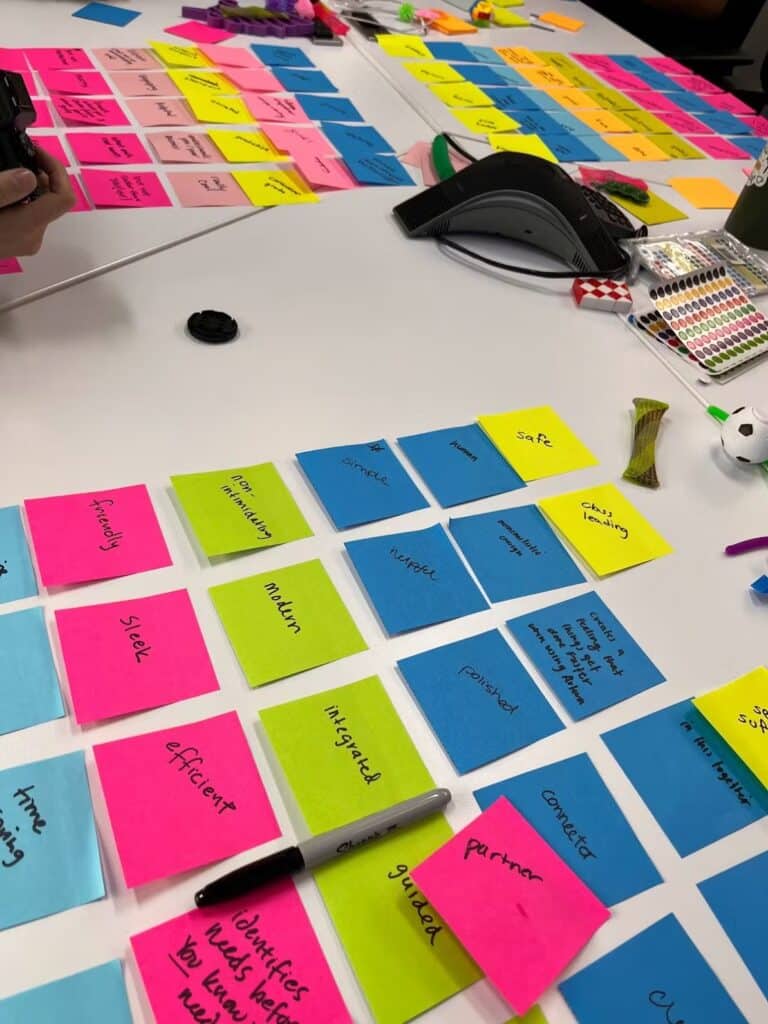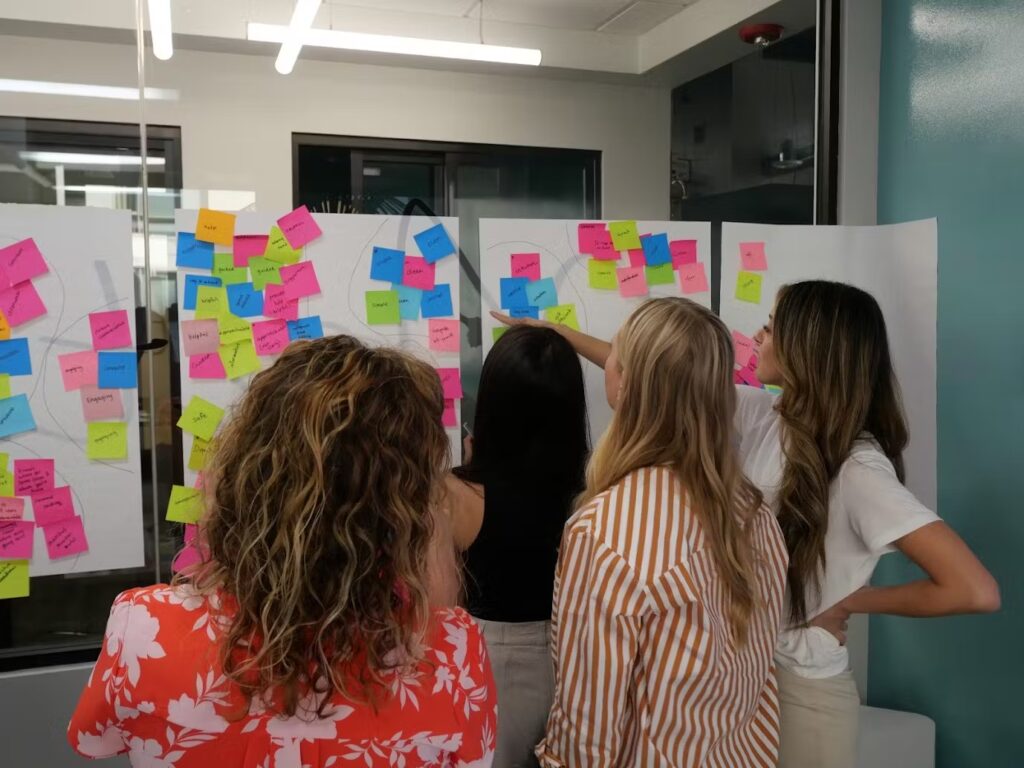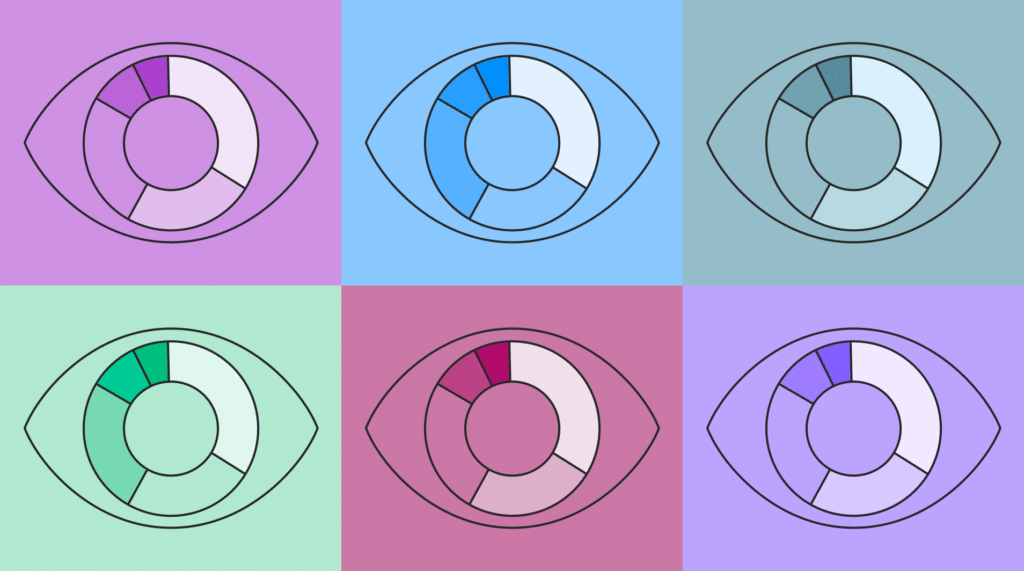
As Product Designers at Artera, we are responsible for blending user needs with business goals to craft intuitive, usable and valuable digital experiences for our customers. In order to stay aligned and deliver cohesive experiences, we rely on our design principles. What are design principles? Borrowing Invision’s definition, “Design principles are a set of values that act as a compass for your product. They’re an agreed upon truth: the guideposts that keep your entire team on the same path as you move through the design process.” Good design principles are bespoke, memorable and durable.
Designing Design Principles
We identified a need for design principles a few months after I joined Artera. We had a few new team members join that year and were working hard to build our design system (our library of components and patterns). We were making a lot of critical design decisions that had impact across teams and product areas. We realized that a shared language could help us make tradeoff decisions more efficiently, and that shared values could unite and empower the team to work with increased confidence.
Since design principles are meant to be truly shared values, it was important that the process to develop these principles be collaborative and inclusive. In October of 2022, our small but mighty design team met up in San Diego for three days, armed with lots of stickies and snacks, to design our design principles. We approached this how we approach many design problems, using Design Thinking.
We started by empathizing, synthesizing input from stakeholders we had gathered in a survey to learn how Artera thinks of good design.
Then we defined. We aligned on what makes good design principles and how we will and won’t use design principles.
We ideated through a variety of brainstorming and affinity mapping activities to tease out what Artera’s personality is, what is important to our users, and how we aspire our product to be perceived.
Next, we prototyped. We drafted definitions for the themes that were revealed during affinity mapping. We debated and redrafted, finally settling on a set of three design principles.
And finally we tested. We shared our principles out to the organization through our Design Newsletter, and let our principles guide us for a couple of months.
We iterated a few months later as our Product and Engineering teams developed their set of principles and we were challenged to align them to similar formatting for organizational consistency. This turned out to be an opportunity to improve our principles, keeping the spirit of each, but evolving the language to be more memorable. We are agile after all, and this evolution felt like a positive one.




Artera Design Principles
Clarity Creates Confidence We guide everyone to achieve their goals with confidence through clear language, organized interfaces and intuitive workflows. People feel empowered, never guessing what to do next.
Unified for Efficiency We ensure a smooth journey by understanding connections and standardizing patterns. Our experience is integrated and cohesive. People feel like they can get any task done with efficiency.
Quality Builds Trust We consider every design choice carefully. We craft exceptional experiences that build trust through visual appeal and high perceived value. People feel that our product is secure and performant.
Our Principles in Action
We look for opportunities to embrace our design principles daily. We aim to keep our principles top of mind and have them guide our work and decision making. We’ve woven them into our design team’s quarterly goals and make a point to celebrate when work aligns to one of our principles. It’s a muscle we’re still building, and a muscle worth building, because we have seen the positive impact of these shared values. We’re still testing their durability but early signals indicate we did a solid job of designing our design principles.
The contents of this post as well as the opinions expressed herein do not contain business advice. The business information provided is for general informational and educational purposes only and is not a substitute for professional advice. Accordingly, before taking any actions based upon such information, we encourage you to consult with the appropriate professionals. THE USE OR RELIANCE OF ANY INFORMATION CONTAINED IN THIS POST IS SOLELY AT YOUR OWN RISK.




